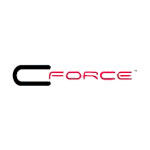Nissan was among the last to offer a full-size SUV with a big V8 engine as standard equipment. Most of the rest — including Ford and Toyota — have already replaced the big V8s that were standard in their big SUVs with much smaller sixes.
And now so has Nissan.
But while the engine has gotten smaller, the numbers have gotten bigger — contradicting the axiom that there is no replacement for displacement.
What It Is
The Armada is Nissan's full-size SUV. It competes with others of its type, including the Ford Expedition, Chevy Tahoe, Toyota Sequoia and Jeep Wagoneer.
Like most of them — excepting the Tahoe (and its divisional cousins, the GMC Yukon and Cadillac Escalade) — the Armada no longer comes with the big (5.6-liter) V8 it used to come standard with. Instead, it comes with a 3.5-liter V6, which is a size (and type) of engine that just five or so years ago was typically found in much smaller family cars such as the Toyota Camry and Honda Accord (which both now come only with much smaller fours).
But the Armada's new V6 makes much more power — 425 horsepower — than the previously standard 5.6-liter V8 did, and it uses slightly less gas to make it.
Prices start at $57,520 for the base SV trim, which includes the new V6 and also comes standard with dual 12.3-inch LCD displays, automatic LED headlights, running boards and synthetic leather seat covers. Rear-wheel drive is standard. Four-wheel drive can be added as an option and that brings the MSRP up to $60,520.
There are also SL ($62,970), Platinum ($69,930), Pro4X ($73,740) and Platinum Reserve ($76,900) trims. All these trims except the Pro4X come standard with RWD; 4WD is a $3,000 standalone option. The Pro4X comes standard with 4WD plus all-terrain tires on 20-inch wheels, an electronically locking rear differential, skid plates, tow hooks, adaptive suspension and a different front clip that allows for increased angles of approach.
The Platinum has quilted leather seats, a panorama sunroof, dual 14.3-inch LCD displays heated second row seats and a 12-speaker Klipsch ultra-premium audio system (this system is also included with the SL, which also gets a heated steering wheel).
Massaging front seats and puddle lighting come standard with the Platinum Reserve.
What's New for 2025
The Armada gets a total makeover — centering on the new twin turbo V6.
What's Good
— New V6 may be small but it makes big power; uses a little less gas too.
— Though big, it doesn't feel huge.
— Maybe the most comfortable seats of the bunch.
What's Not So Good
— Some rivals - like the Ford Expedition - have higher maximum tow ratings.
— All of the SUVs in this class have become pricey. On average, they are all about $8-10k more to start than they were as recently as three or four years ago.
— The old V8 sounded bigger.
Under the Hood
Every Armada trim comes with a twin-turbocharged 3.5-liter V6 that makes 425 horsepower and 516 foot-pounds of torque. This is a respectable bump in horsepower — and torque, especially (the previous 5.6-liter V8 touted 400 horsepower and 413 foot-pounds of torque). But the most impressive stat is that even though there's more power on tap, the new engine uses slightly less gas: 16 mpg city, 20 mpg highway versus 14 mpg city, 19 mpg highway for last year's V8.
This proves that there is a replacement for displacement.
It used to be the case that a power increase meant an engine increase — and a mileage decrease. It doesn't anymore. Nissan — and other vehicle manufacturers — have figured out that a smaller engine can be used to reduce fuel consumption (important for complying with federal fuel economy standards) and that a turbo (or two) can be used to pump up the power when it's wanted, while delivering better overall fuel economy than a bigger V8 can.
The Armada's V6 is also much stronger than the V8 that still comes standard in the Chevy Tahoe (5.3 liters, 355 horsepower) and bests the output of the Ford Expedition's twin-turbo V6 (400 horsepower) too. The latter is available with a stronger (440 horsepower) version of its 3.5-liter V6, but it's an expensive option.
The Toyota Sequoia boasts the strongest standard (and smallest) engine of the bunch: 437 horsepower and 583 foot-pounds out of just 3.4 liters. It is also the only one of the bunch that comes standard with (or is even available with) a hybrid-augmented drivetrain.
Like the others, you can stick with RWD (two-wheel drive) or select the optional 4WD system. It's a full-time/automatic 4WD system with driver-selectable Low range that can be engaged by pushing a button on the lower center stack. There are also a variety of driver-selectable drive modes, including Snow, Mud/Sand, Eco, Normal and Sport. Selecting the mode you prefer alters how the engine responds to pressure on the pedal as well as shift points and firmness.
A nine-speed automatic transmission is standard.
Despite the new V6 engine being significantly stronger than the previously standard V8, the Armada's 8,500-pound max tow rating remains the same. The Expedition and Sequoia come standard with a 9,500-pound maximum tow rating. The Tahoe — with its standard 5.3-liter V8 engine — comes with an 8,400-pound max tow rating.
On the Road
Driving a big SUV with such a small engine is interesting in that it pulls harder and feels stronger than one with a bigger engine. This big thing can accelerate to 60 mph in just under six seconds.
It's like watching the YouTube videos of that average-sized/average-looking Anatoly guy who goes to meathead gyms and lifts much heavier weights than the meatheads are working out with.
The Nissan's V6 even sounds bigger than it is — and that is something lacking in other small-engined big SUVs. Some of them try to compensate for the higher-pitched sound of their small engines by piping in the deeper bass sounds of a bigger engine (through the car's speakers), but that's cheesy because it's fake. Nissan's twin-turbo V6 sounds good on its own. Not like a V8, but not like something that sounds too small.
The turbos — plural — punch up all 516 foot-pounds of torque at 3,600 rpm — much more torque and much sooner than the old V8 conjured — and that is the chief reason why this big SUV feels so light on its feet. It takes less pedal pressure to get more response. It's almost like having an even bigger engine than the previous 5.6-liter V8 — just without the lower gas mileage.
At the Curb
The Armada is big — but not overwhelmingly so. It is 209.6 inches long, so a little bigger than the previous-generation (2024) Armada, which was 208.9 inches long. But either way, that's not crazy big. To put the Armada's length in context, a current (2025) Toyota Crown sedan, which is a little bigger than midsize, is 196.1 inches long. The Armada's about a foot longer but that's really not that much bigger.
Except on the inside.
There are three rows of seats and room for as many as eight people. Good luck fitting even six people in a Crown. That's not to slam the Crown — or other midsize or even full-size sedans. They have their virtues. But one of them isn't room for six, let alone more. Five is getting cozy.
Big SUVs such as the Armada are popular because they do have room for more — plus much more room for the things that often come with people (especially kids), such as their sports gear. In addition to room for as many as eight, there is also 20.4 cubic feet of space for gear and whatever else you need to carry behind the third row, and if you fold the third and second rows forward, there's 97.1 cubic feet of space available to make room for big stuff you might need to cart home.
The new Armada also has more cargo space behind its third row and overall than the previous generation Armada, which touted 16.5 cubic feet behind its third row and 95.4 cubic feet overall (with both rows down).
Others in the class do have more room — and space. The Chevy Tahoe, for instance, touts 25.5 cubic feet behind its third row and 122.7 cubic feet overall. But the Armada's room and space compares favorably with the room and space inside other rivals such as the Toyota Sequoia (22.3 cubic feet behind its second and 86.9 cubic feet overall).
The Rest
This is a nice rig with few flaws — if any — that can be pointed to as reasons not to buy it. Except for the one flaw that arguably afflicts all the currently available full-size SUVs. That being how haltingly — and suddenly — expensive they have all become. The Armada and its rivals are not luxury-brand SUVs, yet they all now list for what luxury-brand SUVs listed for just a few years ago. The luxury-brand SUVs have, of course, risen even higher in price; many are or are close to being six-figure SUVs.
To be fair, the Armada — even in SV standard trim — is more luxurious than the luxury-brand SUVs of just a few years ago. The problem is that luxury is exclusive — in both meanings of the word. You get more niceties than you used to. But you'll also pay more for them — and that can exclude people who can't afford to.
The Bottom Line
The new Armada's a nicer SUV than it has ever been before. Which is nice — if you're able to buy one.
Eric's latest book, "Doomed: Good Cars Gone Wrong!" will be available soon. To find out more about Eric and read his past columns, please visit the Creators Syndicate webpage at www.creators.com.






View Comments